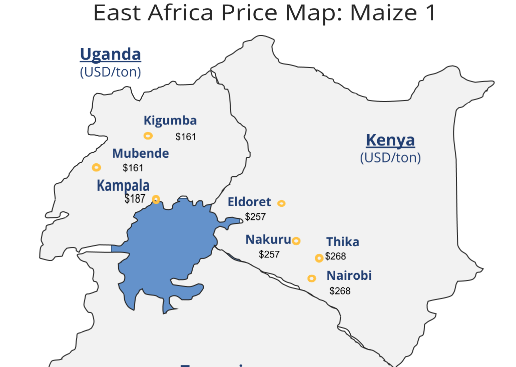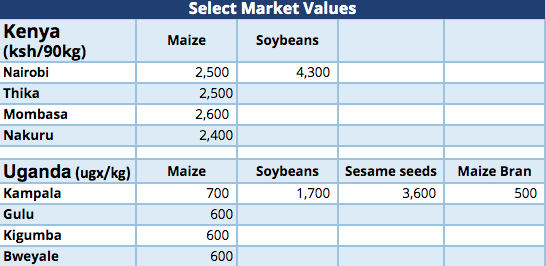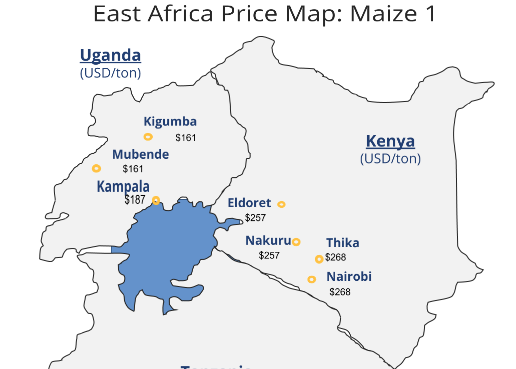Africa News
Africa Newsletter 01-22-21
East Africa Update
Bread Prices Rise On Higher Wheat Costs
Kenya has seen an increase in the local bread price as a result of the increased price of milling wheat in the global market that has seen the grain’s price level reach KES 33,000 per metric ton from KES 25,300 per metric ton and this has seen a 400 gram loaf of bread increase from KES 50 to KES 55.
Business Daily reports on how the price of baking flour has also increased to KES 2,900 from KES 2,500 per pack as a result of the price change from the milling wheat. The bakeries have seen the cost of other ingredients also increase after the outbreak of the coronavirus saw sales hit and forcing millers to cut production.</π>
Kenya Market Update
Maize prices in Nairobi have seen some millers offering KES 2,800 per 90 kg bag while the main published price from government remains at KES 2,500 per 90 kg with local demand increasing. Aflatoxin levels will start being monitored more by the authorities at the borders as Uganda’s crop has previously seen high levels above 10ppb. Soybeans are still seeing bids of KES 48 per kg but some of the processors are open to increase this price point.
Uganda Market Update
Maize is still trading below UGX 700 per kg in Kampala and is expected to fall in price as the drying continues in the producing areas of the country. Traders have started their pursuit of the Kenyan market as they have identified millers that are willing to pay a premium for good quality maize. Soybeans are trading near UGX 1,700 per kg in Kampala with most of the crop still in the drying phase. Yellow beans are available at UGX 2,700 per in Kampala and maize bran is still trading at UGX 500 per kg.</π>
Why Kenya Made U-turn On Uganda Sugar Imports
With Kenya’s increased demand for sugar, the government is looking at more imports under COMESA that will cover its current deficit and this year will target 90,000 tons from Uganda with another 160,000 tons from other countries.
The East African looked at how Kenya has been importing 350,000 tons from within the EAC and COMESA and the increased demand will allow Kenya’s extension for imports under COMESA to be extended from March 2021 to February 2023.
Last year Kenyan officials rejected the importation of some sugar products from Uganda with queries raised on the actual origin and tariff obligations. Uganda’s officials disputed these concerns, as it would be widely published that the country produces 510,000 tons and consuming 360,000 tons per annum leaving enough for exports into the region.
Domestic Milk Sales Grow By 20 Per Cent
Uganda currently produces 2.6 billion litres of milk products with the domestic consumption standing at 800 million litres seeing an increasing of 50,000 litres per day in 2020 compared to only 30,000 litres per day in 2019.
The lockdown saw sales fall was has been detrimental to farmers but sales soon recovered after the restrictions were removed and the government continues to negotiate access of the country’s milk products as neighbouring countries including Kenya currently have a 16% levy on imported Uganda milk products as reported by The Monitor.
Rwanda: Bumper Harvest Hits Market, Eases Pressure On Food Prices
Rwanda is experiencing an early harvest that is seeing lower prices for staple food products such as legumes and potatoes as the recent Consumer Price Index, the main gauge of inflation, rose by 4.2% year on year in November 2020 from 7.2% in October 2020.
According to Rwanda Today, Kigali food markets have had lowering prices over the past four months with a kilo Irish potatoes at Rwf350 in October falling to Rwf200, rice from Rwf 1,100 to Rwf 800 and beans trading from Rwf 1,000 a kilo to the now Rwf 550.




